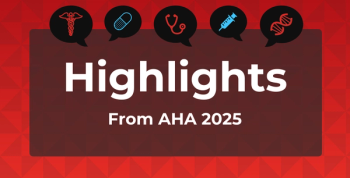
Most Americans Exceed Dietary Recommendations for Salt, CDC Finds
The findings on salt intake were timed to coincide with the release of the 2015 Dietary Guidelines for Americans.
With the release of the 2015 Dietary Guidelines for Americans—and a call for everyone to limit sodium intake—comes research from CDC that shows just how hard this will be, based on what the average person consumes today.
Data from the National Health and Nutrition Examination Survey (NHANES) for persons at least 2 years old, collected from 2009 to 2012, found that 89% of adults and 90% of children exceed the recommended levels, which are no more than 2300 mg for those age 14 and older and less for those age 13 and younger.
Those with hypertension should not have more than 1500 mg of sodium per day, yet the survey found that 86% have more than 2300 mg a day—higher than the level desired for persons who don’t have high blood pressure.
During a briefing with reporters about the 2015 guidelines, administration officials said the typical American consumes 3400 mg of sodium a day.
High blood pressure, or hypertension, is defined as a mean systolic blood pressure of 140 mmHg or higher, mean diastolic blood pressure of 90 mmHg or higher, or self-reported use of antihypertensive therapy. Prehypertension is defined as systolic BP of 120-139 mmHg or mean diastolic mmHg of 80-89 mmHg.
In conducting the survey, results were gathered for 14,728 participants, although results for children age 2-5 years were reported by a proxy and results for children 6-11 years were reported with a proxy’s assistance. Sodium and caloric intake was based on dietary recall.
More adult men (98%) than women (80%) consumed excess sodium, and intake was higher among those who consumed more calories. Consumption was lowest among very young children, ages 2-3 years, but soared later on, as 92% to 94% of those up to 18 consumed excess sodium.
Sodium intake tapered off after age 50, but frequently still exceeded the recommended level of 2300 mg a day, despite the increased risk of cardiovascular disease. Results found that the sources of sodium were consistent with findings from prior years: breads and rolls, deli meats, pizza, poultry, soups, sandwiches, cheese, pasta dishes, meat dishes, and savory snacks.
Reference
Jackson SL, Coleman King SM, Zhao L, Cogswell ME. Prevalence of excess sodium intake in the United States, NHANES, 2009-2012. MMWR, 2016; 64(52):1393-1397.
Newsletter
Stay ahead of policy, cost, and value—subscribe to AJMC for expert insights at the intersection of clinical care and health economics.









































